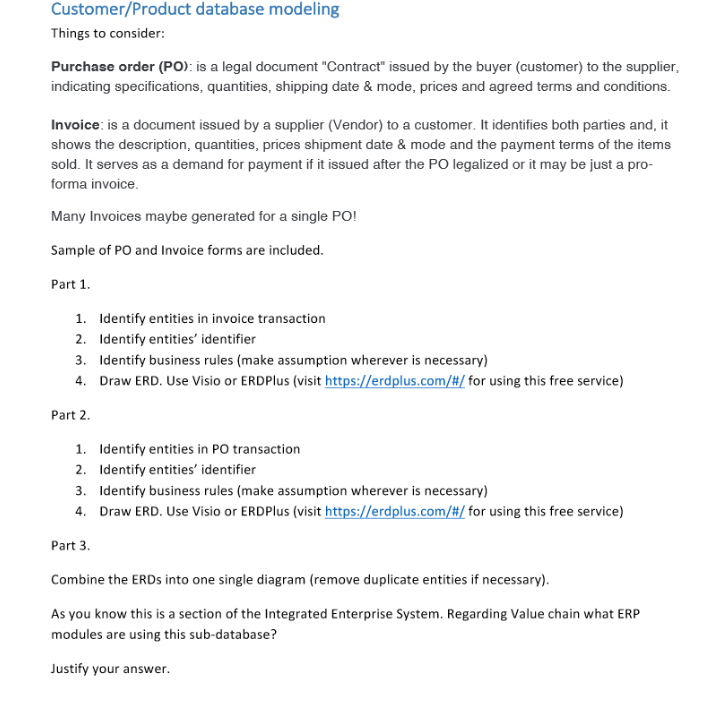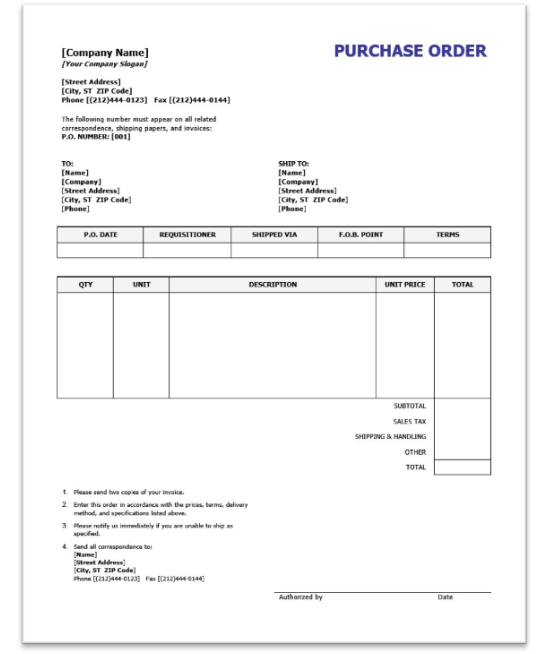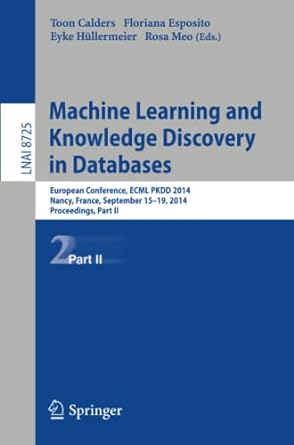


Customer/Product database modeling Things to consider: Purchase order (PO): is a legal document "Contract" issued by the buyer (customer) to the supplier, indicating specifications, quantities, shipping date & mode, prices and agreed terms and conditions. Invoice: is a document issued by a supplier (Vendor) to a customer. It identifies both parties and, it shows the description, quantities, prices shipment date & mode and the payment terms of the items sold. It serves as a demand for payment if it issued after the PO legalized or it may be just a pro- forma invoice. Many Invoices maybe generated for a single PO! Sample of PO and Invoice forms are included. Part 1 Identify entities in invoice transaction 2. 1. Identify entities' identifier Identify business rules (make assumption wherever is necessary) Draw ERD. Use Visio or ERDPlus (visit https://erdplus.com/#! for using this free service) 3. 4. Part 2 1. Identify entities in PO transaction 2. Identify entities' identifier 3. Identify business rules (make assumption wherever is necessary) Draw ERD. Use Visio or ERDPlus (visit https://erdplus.com/#/ for using this free service) 4. Part 3. Combine the ERDs into one single diagram (remove duplicate entities if necessary). As you know this is a section of the Integrated Enterprise System. Regarding Value chain what ERP modules are using this sub-database? Justify your answer. Customer/Product database modeling Things to consider: Purchase order (PO): is a legal document "Contract" issued by the buyer (customer) to the supplier, indicating specifications, quantities, shipping date & mode, prices and agreed terms and conditions. Invoice: is a document issued by a supplier (Vendor) to a customer. It identifies both parties and, it shows the description, quantities, prices shipment date & mode and the payment terms of the items sold. It serves as a demand for payment if it issued after the PO legalized or it may be just a pro- forma invoice. Many Invoices maybe generated for a single PO! Sample of PO and Invoice forms are included. Part 1 Identify entities in invoice transaction 2. 1. Identify entities' identifier Identify business rules (make assumption wherever is necessary) Draw ERD. Use Visio or ERDPlus (visit https://erdplus.com/#! for using this free service) 3. 4. Part 2 1. Identify entities in PO transaction 2. Identify entities' identifier 3. Identify business rules (make assumption wherever is necessary) Draw ERD. Use Visio or ERDPlus (visit https://erdplus.com/#/ for using this free service) 4. Part 3. Combine the ERDs into one single diagram (remove duplicate entities if necessary). As you know this is a section of the Integrated Enterprise System. Regarding Value chain what ERP modules are using this sub-database? Justify your









